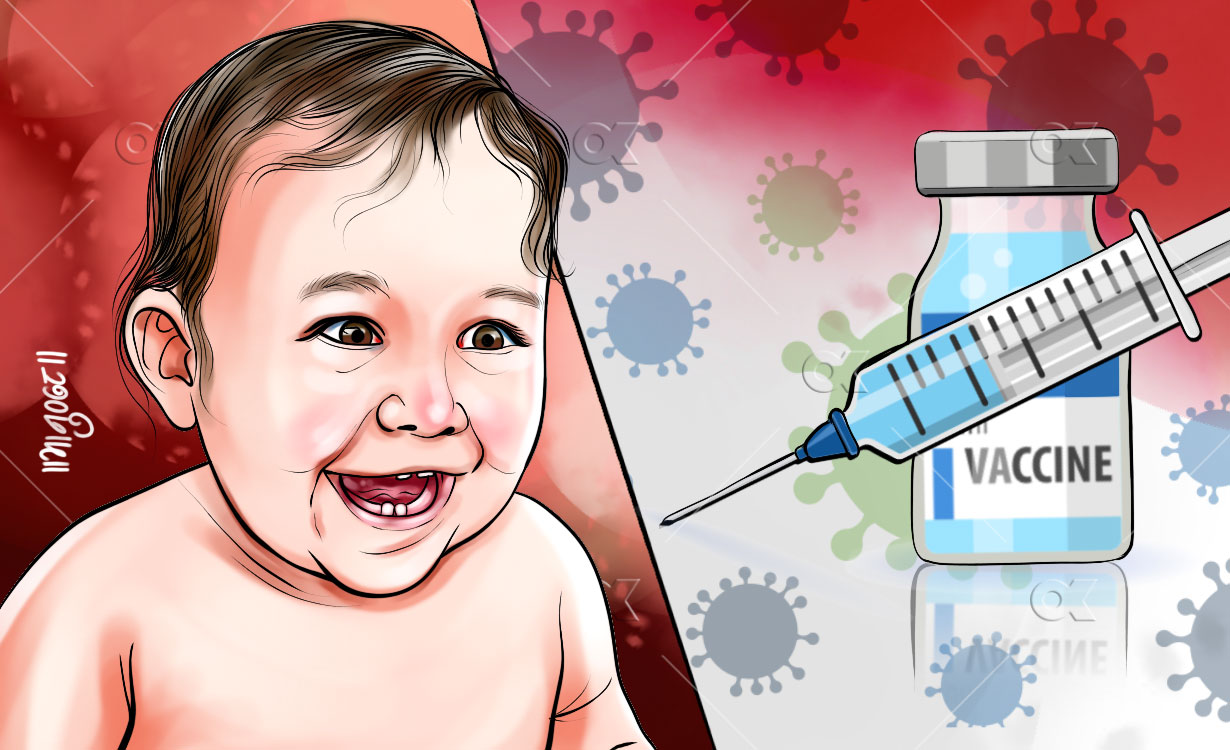Covid-19 has made things difficult for children. They have been forced to stay indoors, miss school and have had to sacrifice a lot. But what people have failed to realise is they have also not been getting the vaccines given to children for diseases other than Covid-19.
As Nepal has stepped up the vaccination drive against Covid-19, things seem different when it comes to children. The coverage rate of vaccines given to protect them from tuberculosis, diphtheria, hepatitis, polio and measles has gone down since the pandemic hit the country in March 2020 while the rates were already problematic before that, say experts.
Overlooked crisis
Vaccination centres dedicated to children have shut down or are being used to tackle Covid-19. Those that are open are only for a short period, which has made it hard for people in remote areas of Nepal to get their children vaccinated. That is one reason why the coverage rate has decreased, claim experts.
They say another reason for the drop is the continuous lockdown that has happened in the country along with the fear of contracting the virus.
Dr Jhalak Sharma Gautam, the chief of the Vaccination Section under the Department of Health Services, says the government vaccinates over 620,000 children below the age of one against 12 diseases every year. In 2019, around 537,000 children were vaccinated. In 2020, as Covid-19 struck Nepal, the number went down to 483,000.
“As the country went into lockdown, most of the vaccination centres were shut. We asked them to open the centres, but due to fear of Covid-19, most didn’t open while many parents didn’t take their children to the centres fearing contraction,” Dr Gautam says.
“They know that they have to get their child vaccinated, but they won’t go as they are afraid of contracting the virus. This is worrying,” he says.
When the country went on lockdown in March 2020, only around 8,000 out of around 16,000 vaccination centres were open. This resulted in thousands of children missing out on the immunisation drive. For example, the coverage rate of the BCG vaccine, which protects children from tuberculosis, went down 16 per cent in 2020. Even though its coverage rate increased a bit in 2021 to 79 per cent, it is still 12 per cent less than the 2019 average, which was 91 per cent.
In 2019, the coverage rate of the DPT vaccine against whooping cough, diphtheria and tetanus stood at 90 per cent. In 2020, the rate went down to 86 per cent while the coverage rate in 2021 stands at 87 per cent.
The rate of vaccination against measles that is given to 15-month-old kids has also gone down. In 2019, the vaccination rate was 80 per cent, but in 2020, it went down to 80 per cent. The coverage rate for the second shot for measles also went down in 2020 as it stood at 71 per cent compared to 73. This is 26 per cent less than the government’s target.
The coverage rate of the first vaccine against polio, DPT and hepatitis went down by 4 per cent in 2020 whereas that of its third dose went down by 8 per cent. These vaccines are administered six weeks after the birth of a child.
Similarly, the FIPV-2 vaccination that is given to protect a child from pneumonia stood at 76 per cent in 2019; it went down to 69 per cent. This vaccine should also be administered within six weeks of birth. The PCV vaccine’s coverage rate in 2019 was 81 per cent, but it went down in 2020 to 78 per cent.
An all-time concern

Ideally, the coverage rates of each of the vaccines mentioned above should be 95 per cent. But in Nepal, even during normal times, the rate has been well below 95.
According to the Vaccination Section, the coverage rate of the BCG vaccine is around 90 per cent while the vaccine against measles is yet to go over 75 per cent. Dr Gautam says the numbers are worrying as they are, but the pandemic has made things even worse.
The World Health Organization (WHO) says kids who have missed out on these vaccines are mostly from extremely rural areas or those living in conflict areas where basic health care is scarce.
Dr Gautam says that this is true in Nepal’s context also as people from rural areas, backward classes and illiterate are those who have missed out on vaccines. But, he adds that even children from urban areas have been deprived. He says that in some cases, people move from one place to another a lot and that is another reason why they miss out on vaccination.
“A family living in Dang migrates to Jhapa. That family will find it hard to settle in and will forget that they’ll have to vaccinate their child,” he says.
Another reason for the decrease in vaccination coverage is the lack of information and awareness, he informs.
Vaccination expert Dr Shyam Raj Upreti says demographic challenges in a country like Nepal have also resulted in a decrease in the coverage percentage. He says despite people knowing the advantages of vaccination, they do not go as it is a day (sometimes two) away from where they live.
“The problem is these vaccines are for the children’s future so that they don’t contract avoidable diseases. People in rural areas don’t really understand this, which is why we need to ensure that we start an awareness drive,” says Dr Upreti.
Worldwide data worrisome
According to data collected by the United Nations Children’s Fund (UNICEF) and the WHO from 160 countries, vaccination against 13 major diseases has gone down across the world during the pandemic. The coverage even in a first-world country like the US had gone down. In 2020, only 82 per cent in the US were fully vaccinated against diphtheria, whooping cough and tetanus. This is 10 per cent less than what it was in 2016.
The WHO says that the reasons for the downfall were fake news, propaganda against vaccines and lack of financial means.























